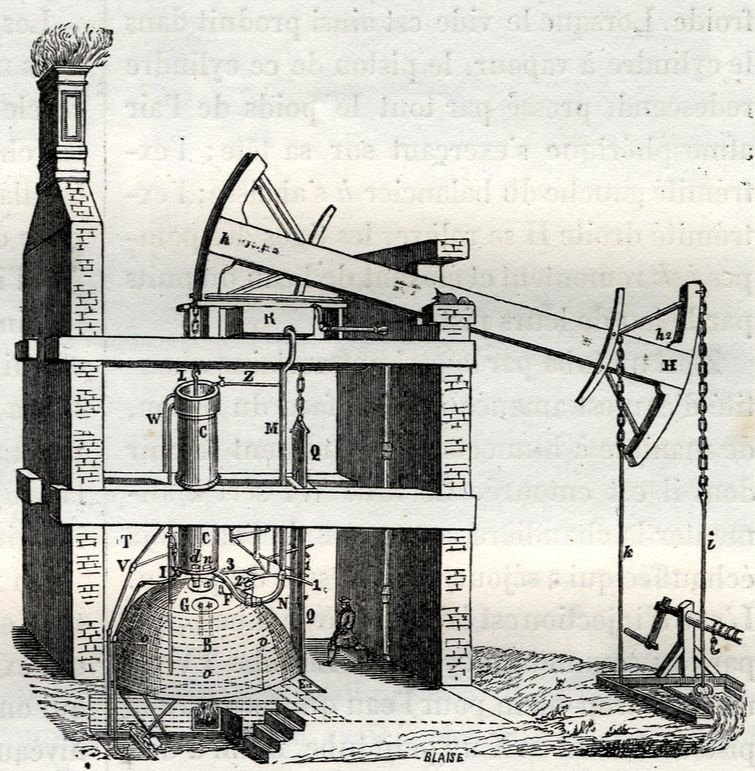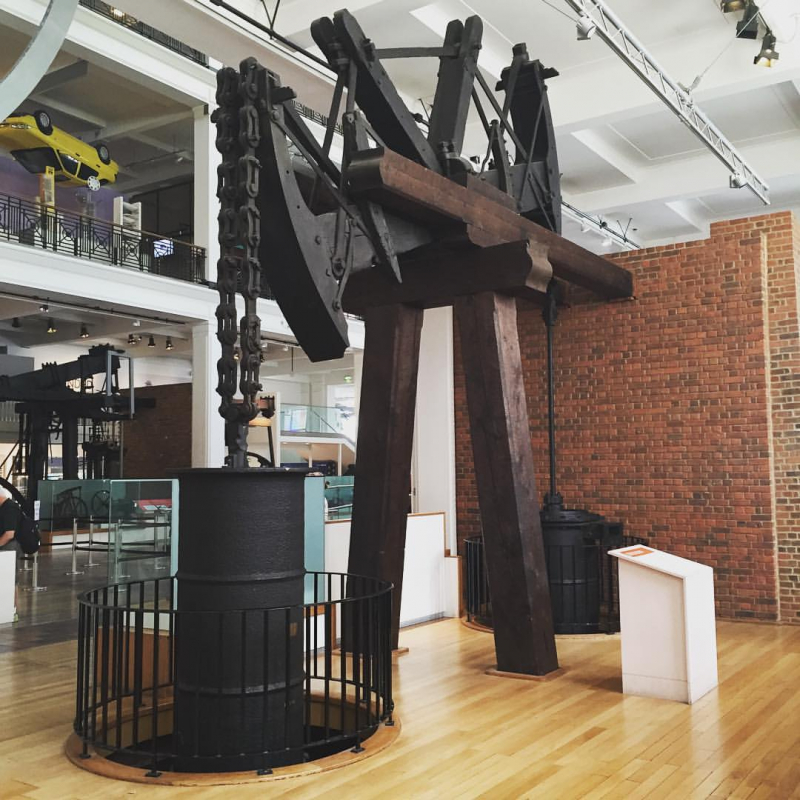The Newcomen engine
One of the major inventions of the Industrial Revolution is the Newcomen engine. Thomas Newcomen invented the atmospheric engine in 1712, and it is commonly referred to as a Newcomen engine. The engine worked by condensing steam brought into the cylinder, creating a partial vacuum that allowed the piston to be pushed into the cylinder by air pressure. It was the first practical machine to use steam to perform mechanical tasks. Newcomen engines were widely employed in Britain and Europe, primarily to pump water from mines. Hundreds were built over the course of the 18th century.
Later engine designs by James Watt were an upgraded version of the Newcomen engine that nearly doubled fuel efficiency. Many atmospheric engines were changed to the Watt type at a fraction of the cost of replacing the fuel. As a result, Watt is now more famous than Newcomen when it comes to the invention of the steam engine.
Because the pump apparatus was heavier than the steam piston, the beam at rest was pump-side down/engine-side up, a position known as "out of the house." To start the engine, the regulator valve V was opened, allowing steam from the boiler to enter the cylinder and fill the space beneath the piston. After that, the regulator valve was closed, and the water injection valve V' was temporarily opened and closed, spraying cold water into the cylinder. The steam was condensed, and a partial vacuum was generated beneath the piston. The pressure differential between the atmosphere above the piston and the partial vacuum below it then forced the piston down, causing the power stroke and lifting the pump gear. The cylinder was then refilled with steam, which destroyed the vacuum and forced the condensate down the sinking or "eduction" pipe. The weight of the pump and gear returned the beam to its original position as the low-pressure steam from the boiler flowed into the cylinder, while also driving the water up from the mine. This cycle was repeated at a rate of around 12 times per minute.
The Newcomen engine was widely used in mining by 1725, particularly in collieries. It remained in place for the rest of the century with little alteration. The Newcomen engine was used to pump municipal water supplies in some places; for example, the first Newcomen engine in France was erected in 1726 at Passy to pump water from the Seine to the city of Paris. It was also used to indirectly power machines by returning water from below a water wheel to a reservoir above it, allowing the same water to move the wheel once more. Coalbrookdale was one of the first places where this happened. To return water to the pool above the Old Blast Furnace, a horse-powered pump was erected in 1735. In 1742- 1743, it was replaced by a Newcomen engine. Horsehay and Ketley furnaces, as well as Madeley Wood or Bedlam furnaces, were built in Shropshire in the 1750s and were powered in a similar method. The latter appears to have had only a tank into which the water was pumped, rather than a pool above the furnace. Engine pumping was less prevalent in other industries, but Richard Arkwright utilized one to give additional power to his cotton mill.












